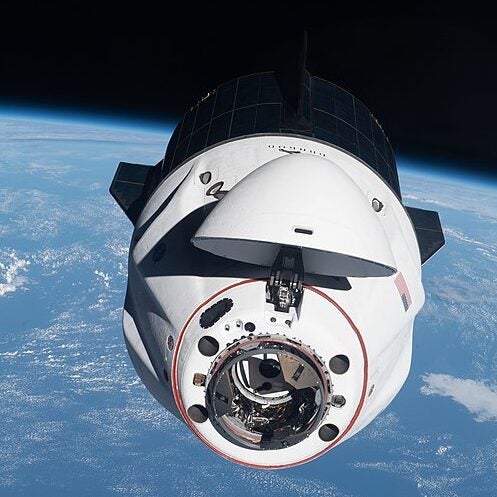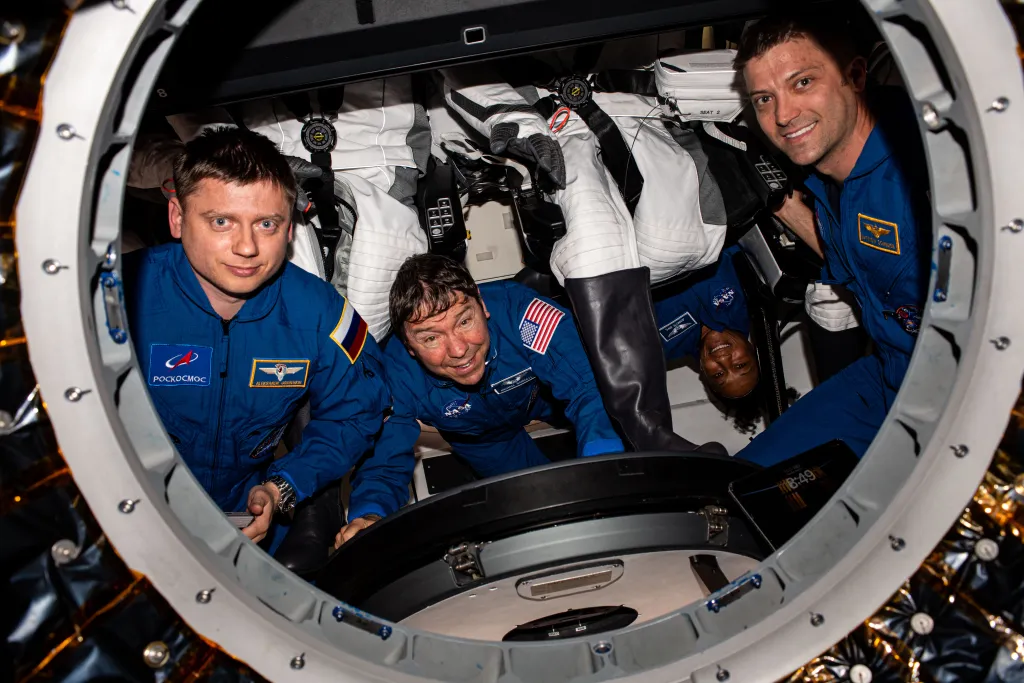
When SpaceX’s Crew Dragon capsule Endeavour returns to Earth this week, she will set a clutch of records for the most time spent in space by a crewed spacecraft.
Launched for her fifth mission in March, Endeavour has notched 23 cumulative months in orbit, circled Earth 11,000 times and traveled 292 million miles (470 million kilometers). She is but one of several historical Endeavours that helped satiate humanity’s thirst for exploration.
What’s in a name
Her borrowed glory originates from seagoing and spacefaring vessels of old. The name offers a tip of the hat to the British Royal Navy’s HMS Endeavour, commanded by James Cook. In 1769, Cook’s crew observed the Transit of Venus from Tahiti — an observation that helped precisely calculate distances between Earth and the Sun. They also charted Australia and New Zealand and observed thousands of new plants and animal species.
Endeavour also honors Apollo 15’s Command and Service Module (CSM), another Endeavour which in 1971 flew astronauts Dave Scott, Al Worden, and Jim Irwin to the Moon. While Scott and Irwin explored the Hadley-Apennine mountains, Worden remained in orbit surveying the Moon with multiple scientific sensors. During the homebound journey, Worden made the first deep-space spacewalk, 197,000 miles (317,000 km) from Earth.
But SpaceX’s accomplished little ship owes her name to yet another Endeavour — the last of NASA’s space shuttle fleet, built to replace the destroyed Challenger. From 1992 to 2011, shuttle Endeavour flew 25 missions, accrued 299 days in space, circled Earth 4,671 times and travelled 122 million miles (197 million km). Across those flights, she serviced the Hubble Space Telescope and helped build the International Space Station (ISS).
The Crew Dragon Endeavour roared onto the scene in 2020, ferrying NASA’s Doug Hurley and Bob Behnken to the ISS. They named her for shuttle Endeavour, which both men flew on the first missions of their respective astronaut careers.
Related: From space to museum showcase: the shuttles’ final mission

Setting records
Now, fast-forward to today. Endeavour has logged four multi-month ISS expeditions and a 17-day private AxiomSpace research flight. She has carried 18 men and women from the U.S., Russia, Japan, France, Canada, and Israel. A 2021 mission lingered for 199 days in space — the longest by a U.S. crewed spacecraft at the time. And in 2023, she flew a United Arab Emirates astronaut on a half-year ISS stay.
Endeavour’s ongoing Crew-8 flight began March 3, when she launched from Kennedy Space Center’s historic Pad 39A carrying NASA astronauts Matt Dominick, Mike Barratt, and Jeanette Epps, plus Russian cosmonaut Alexander Grebenkin. They reached the ISS the next day for a planned six-month station increment.
But Crew-8’s tour would unexpectedly expand to seven and a half months, experiencing more than its fair share of twists and turns. Spanning ISS Expeditions 70, 71, and 72, they shared the station with a rotating cast of 17 other astronauts and cosmonauts from the U.S., Russia, Denmark, Japan, and the first national space traveler of Belarus. They welcomed or bade farewell to six crewed and seven uncrewed visiting vehicles — one of which directly led to their extended mission.
In June, Boeing’s Starliner arrived with NASA astronauts Barry “Butch” Wilmore and Suni Williams for what should have been a weeklong test flight. But helium leaks and reaction control system thruster maladies kept them aboard the ISS for months, until NASA opted in August to return Starliner to Earth empty and bring Wilmore and Williams home on a SpaceX Crew Dragon in February 2025.
The resulting reshuffle of ISS operational priorities and the planned arrival and departure of other crews in September pushed Crew-8’s return from late August to early October. Then came Hurricane Milton, which mauled Florida with 180 mph (285 km/h) winds, killing at least 27 people and causing more than $30 billion in damage. With Endeavour targeting an end-of-mission splashdown off the Florida coast, Crew-8’s return was again delayed.
She is now set to come home this week, by which time Dominick, Barratt, Epps and Grebenkin will have spent more than 225 days in space.
And that sets a new record for the longest single flight in history by a crew-carrying spacecraft. Nineteen astronauts and cosmonauts have flown longer missions — notably, Russia’s Valeri Polyakov set a world record of 437 days in space in 1994/1995, while America’s Frank Rubio concluded a 371-day flight last fall.
But these ultra-long-duration space travelers often launched or landed in different ships, as visiting crews routinely left “fresh” Soyuz capsules for use by long-duration crews, then returned home in older ships nearing the end of their operational lifetimes. Others launched in U.S. shuttles and landed aboard Soyuz, or vice versa.
The previous longest mission by a crewed spacecraft was Russia’s Soyuz TMA-9, which ferried U.S. astronaut Mike Lopez-Alegria and Russia’s Mikhail Tyurin to the ISS in September 2006. It brought them safely back to Earth in April 2007. Their 215-day mission orbited Earth more than 3,440 times and flew 90 million miles (144 million km).
This week’s landing will bring the 33-week space marathon of Dominick, Barratt, Epps and Grebenkin to a close after 3,600 orbits and 96 million miles (154 million km) flown. Epps will eclipse NASA astronaut Jessica Watkins as the most experienced African-American space traveler. And Endeavour herself ends her fifth flight with 695 off-planet days — twice as much time as her now-retired shuttle namesake spent in space.
But as the longest mission by a crewed spacecraft, Endeavour’s record will not stand for long. Next March, Soyuz MS-27 will carry Russian cosmonauts Sergei Ryzhikov and Alexei Zubritsky and NASA’s Jonny Kim to the ISS. Their mission will last until November 2025 — a full eight months. As humanity prepares to explore beyond Earth orbit, records will continue to be made, broken and remade in the years ahead.









